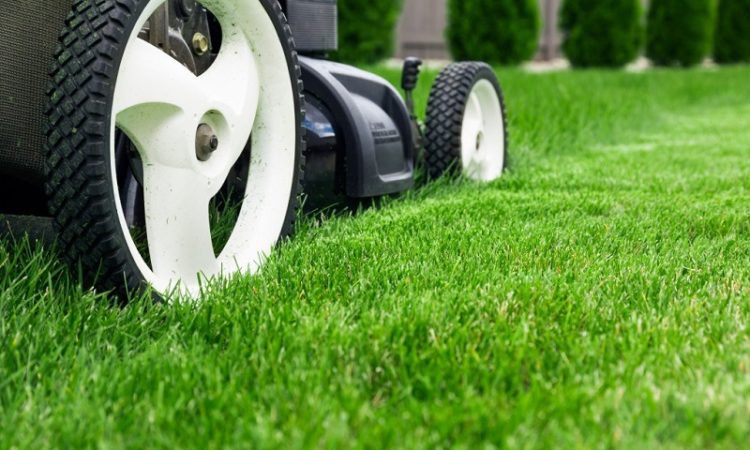
As commercial landscapers, we frequently inquire how to take care of a yard in the spring, and also our answer isn’t as much , but when. So, it is crucial to time it correctly and wait patiently until your yard is prepared. Too early and you might kill or crush fresh bud. Too late and you’re going to miss valuable windows of time to get specific lawn software.
When should you get started doing spring yardwork?
Just because we’ve got a few hot days in March, or even February, does not mean that you ought to pull your own gardening boots and grab your yard tools. Ensure that you wait until your yard is largely green until you go outdoors and begin raking, aerating or mowing. On the flip side, do not wait till it is too late at spring to employ a weed control product or plant grass seed. With spring lawn maintenance, it is all about time.
6 spring yard care tips for a Gorgeous lawn
Understanding these six yardwork measures can allow you to realize how to care for your lawn . Based upon the condition and age of the possessions you might not have to finish all them, but here is what it takes to have a stunning lawn.
Rake
Thatch is made up of little parts of dead grass. If a lot of builds up it may make a barrier blocking sunlight, air, and moisture from reaching your possessions. This can help separate present grass shoots and promote new growth. If you intend on aerating your yard, constantly rake to dethatch first for greater outcomes.
Aerate
If your lawn is now compacted in high ranking places, fresh bud is going to have a tricky time getting root. An aerator eliminates little plugs of soil from the yard, loosening the floor and letting greater air, water, and nutrients to the ground. How frequently should you aerate your yard? Aerating doesn’t need to be done each year. Based on the total amount of thatch and soil compaction you might have to aerate after every 3 to 5 decades.
Evaluation Soil
Get a DIY soil testing kit in the regional lawn and garden shop to ascertain the pH level of your land. When it’s overly acidic you might have to spread a coating of lime within your yard to neutralize the acidity. Why is acidic dirt bad? Weeds and moss thrive in polluted soil, and fertilizers do not do the job also. Various kinds of weed endure different pH levels. Here’s a graph on land pH predicated on bud type.
Fertilize
Spring feeding ought to be a lot lighter compared to fertilization in the autumn. Bear in mind, you’re working together with tender new grass shoots which are just beginning so do not overwhelm them straight away. The three chief nutrients in compost are nitrogen, phosphorus, and potassium (your soil test will establish the nutrition your bud needs). Implementing a slow-release nitrogen fertilizer promotes development, impairs health, and lessens the threat of turf burn off and fungus.
Control Weeds
Pre-emergent weed control prevents weed seeds from germinating, which is why time is everything. Should you wait too long, and weeds are growing, it is too late. A fantastic rule of nature would be to employ a pre-emergent as the forsythia bushes finish flowering. Use a spreader for much, comprehensive coverage. The pre-emergent compound is triggered by water and after it melts to the earth will stay effective for many weeks. Here is more advice about safeguarding your lawn out of weeds.
Reseed
Bare or brownish areas of your yard have to be reseeded. Once you test your soil condition and fix the pH level (if necessary ), and you also aerate to loosen compacted earth, your yard is currently prepared for grass seed.
Can I utilize a pre-emergent in my yard if I would like to develop new grass?
No. Why? Should you plant grass seed you cannot employ a pre-emergent since, together with preventing weeds, then it’s also going to prevent any fresh grass from growing. It is possible, however, fill in bare spots after employing pre-emergent, but you have to wait 12 weeks to the weed remedy to run its program.
Maintaining your lawn through spring, summer, and autumn
Ensure that you keep your grass cut into the appropriate height during the winter months to maintain your lawn looking great until winter.
How short if I cut my own grass?
The issue is, cutting more than one third of the bud’s height is one of the greatest mistakes you may make. In reality, the more frequently you mow, since you are not cutting off, causes a thicker, healthier lawn.
What happens when I cut my own grass too short?
Called “scalping,” if you cut more than one third of the bud’s height, your yard may go to a condition of physiological shock, leading to bare or brownish spots. Why? If you cut grass too short, you’re depleting your yard of energy reserves which could weaken or eliminate the turf. When it’s too late and the damage is done, do not believe that you can fix everything with a fast dose of compost. Applying fertilizer is only going to make things worse, maybe burning off the vulnerable bud.
